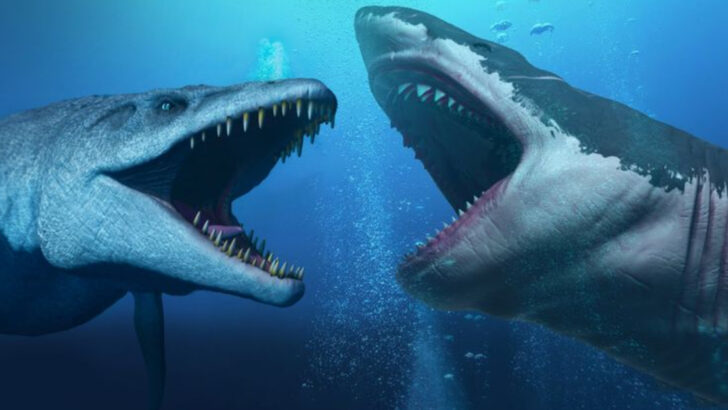In the mysterious depths of the ancient seas, two colossal creatures ruled as the undisputed giants of their time—Megalodon and Mosasaurus.
Their legacy has sparked intrigue and debate among scientists and enthusiasts alike.
In this blog post, we delve into 12 fierce facts that highlight the prowess and distinctive traits of these legendary predators.
From their sheer size to their hunting strategies, we uncover what made each of these titans the ultimate sea predator.
Join us as we compare and contrast their reigns and decide which truly was the king of the ancient oceans.
Size Matters
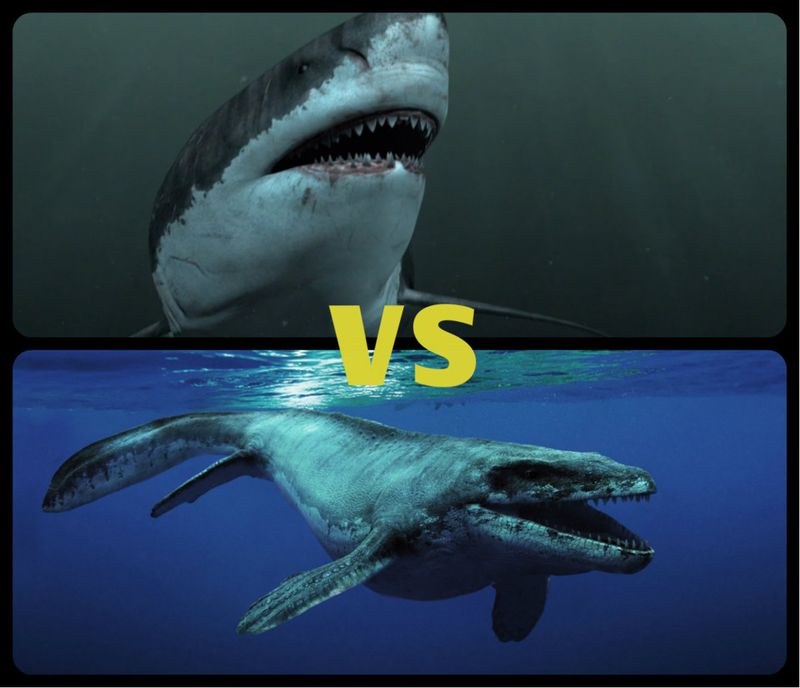
Imagine standing in the shadow of giants. The Megalodon, with its astounding length of up to 60 feet, was a true leviathan. In comparison, the Mosasaurus was no small contender, reaching lengths slightly under its rival.
These dimensions made them formidable hunters of their time. The Megalodon’s jaw alone could easily engulf a car, showcasing its sheer power. Meanwhile, the Mosasaurus, with its elongated body, moved with serpentine grace.
These attributes were not just for show; they were essential adaptations for ruling their respective territories.
Dietary Preferences
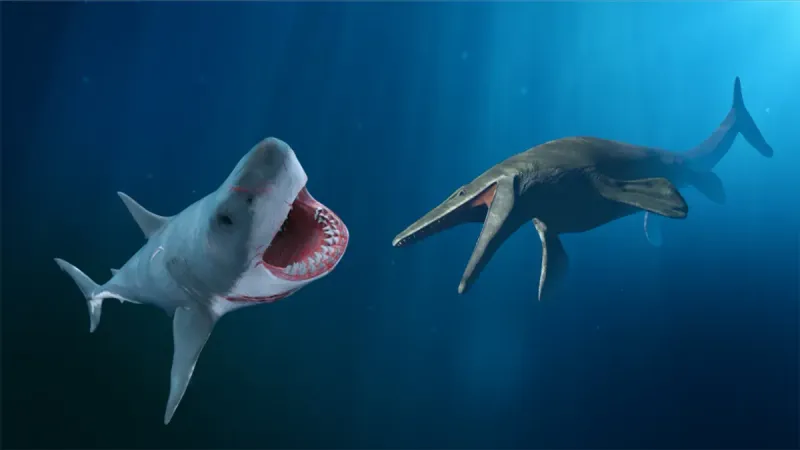
Both predators had robust appetites, but their menu choices painted different pictures. Megalodon primarily hunted large marine mammals like whales and dolphins, leveraging its massive jaws to capture prey.
In contrast, the Mosasaurus was an opportunistic feeder. It could be seen preying on anything from fish to unsuspecting dinosaurs near the shoreline. This dietary flexibility allowed the Mosasaurus to thrive across various marine environments.
Their distinctive feeding strategies highlight evolutionary paths shaped by availability and competition in the ancient seas.
Hunting Techniques
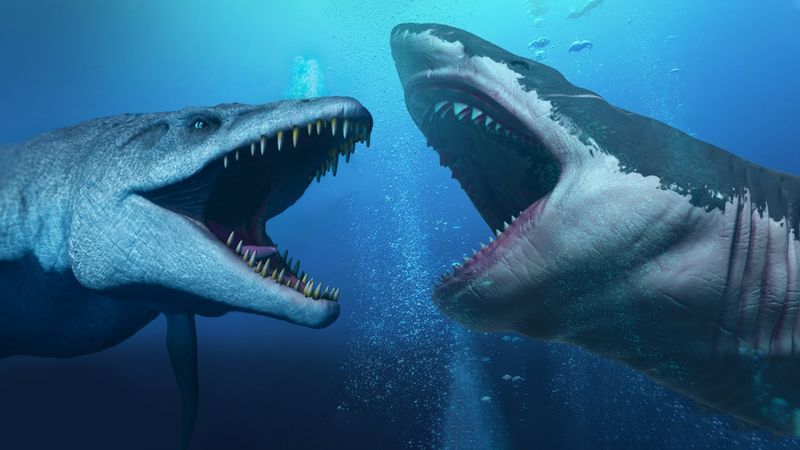
Stealth and power defined their hunting prowess. The Megalodon, often relying on ambush tactics, would strike from below, utilizing the element of surprise. Its immense speed and strength ensured a quick capture.
On the other hand, the Mosasaurus showcased agility, using its powerful tail to maneuver through waters with impressive speed. This allowed it to corner prey in shallow waters.
Each predator excelled in its niche, displaying remarkable adaptations that underscored their dominance in different aquatic arenas.
Fossil Discoveries

The unearthing of their fossils has been a journey of revelation. Megalodon teeth, often up to 7 inches long, are among the most common fossils, giving insight into its feeding habits and size.
Mosasaurus fossils, primarily vertebrae and skull fragments, tell tales of its elongated form and fearsome jaws. Each discovery adds layers to our understanding, painting a vivid picture of the ecosystems they dominated.
These fossils are not mere remnants; they are keys to unlocking secrets of prehistoric marine life.
Geographical Range

Vast territories marked their reign. Megalodon roamed the open oceans, with fossil evidence found across continents, indicating a global presence.
The Mosasaurus, while not as widespread, was predominantly associated with the Western Interior Seaway and other coastal regions. This difference in habitat range influenced their evolutionary paths and interactions with other marine life.
Understanding their geographical distribution helps researchers piece together the dynamic ecosystems of the Cretaceous and early Cenozoic periods.
Extinction Theories
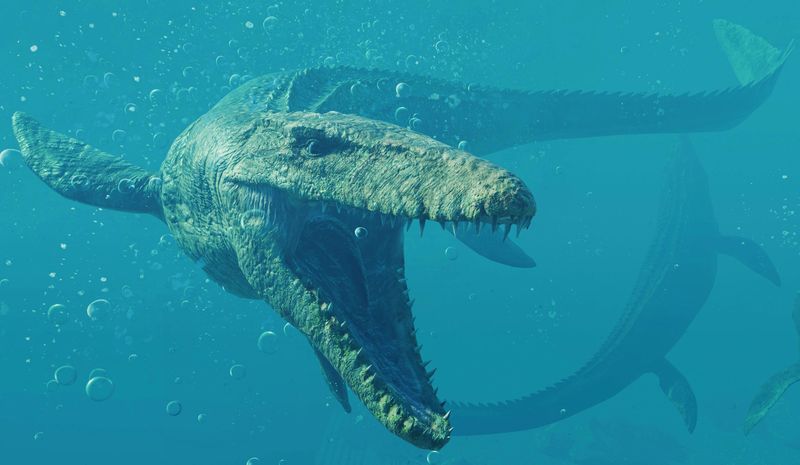
The end of their reigns remains a topic of intrigue. Megalodon’s extinction is often linked to climatic shifts and changes in sea levels, which affected its primary food sources.
Conversely, the Mosasaurus met its demise during the Cretaceous-Paleogene extinction event, famously marked by an asteroid impact. These events reshaped marine life, paving the way for new species to emerge.
By studying their extinctions, scientists gain insights into the fragility and resilience of life on Earth.
Anatomical Features
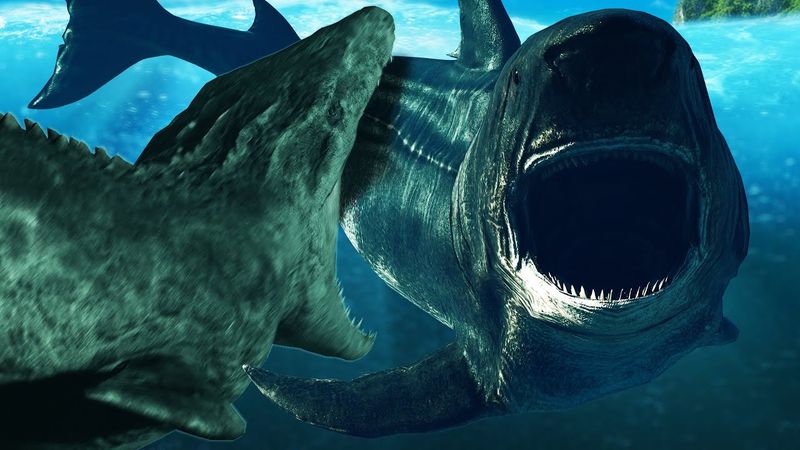
Their anatomy was a testament to their predatory lifestyles. Megalodon boasted serrated, blade-like teeth designed for slicing through flesh, complementing its robust, muscular build.
The Mosasaurus, with its long, flexible body and flipper-like limbs, was built for swift, agile movements in water. These anatomical features were not just for hunting; they were indicative of their evolutionary success as apex predators.
Each anatomical trait had a purpose, honed over millions of years in the relentless pursuit of survival.
Cultural Impact
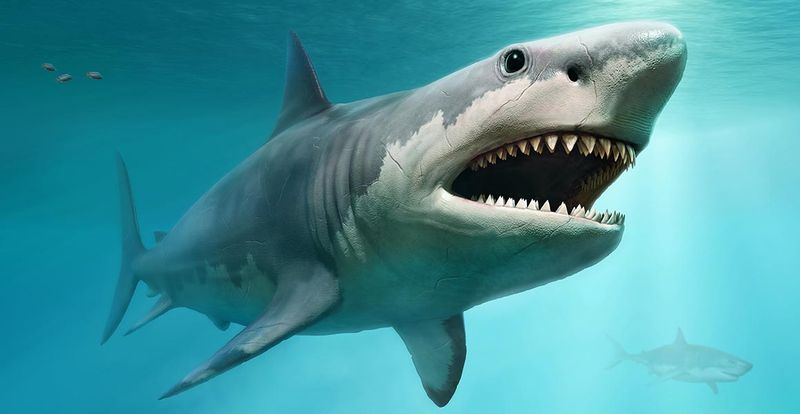
These giants have left lasting impressions beyond the natural world. Megalodon, often depicted as a colossal, fearsome shark, has become a staple in movies and literature, symbolizing the unknown dangers of the deep.
The Mosasaurus, while less prominent, has featured in paleontological exhibitions and documentaries, captivating audiences with its crocodilian likeness.
Their legacy continues to inspire and fuel imaginations, reminding us of Earth’s rich prehistoric tapestry and the mysteries that still lie beneath the waves.
Evolutionary Relatives
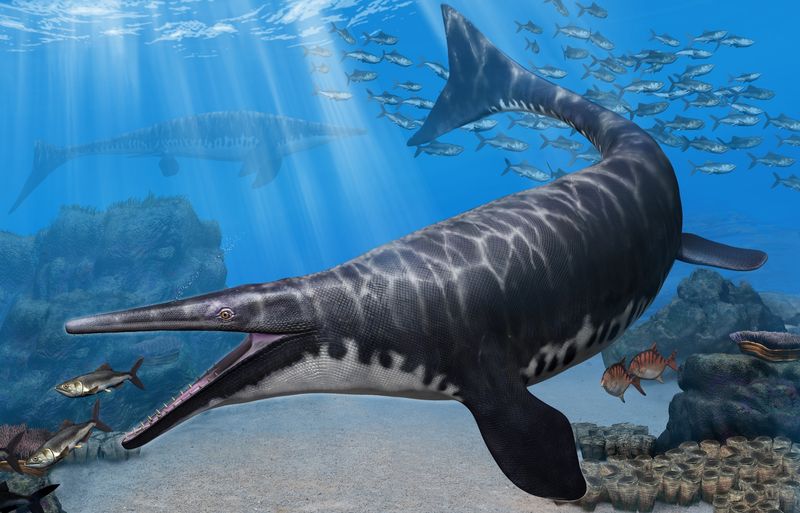
The family trees of these titans offer intriguing insights. Megalodon shares a lineage with today’s great white sharks, offering clues about its behavior and physiology.
Meanwhile, Mosasaurus is more closely related to modern reptiles like monitor lizards, hinting at its adaptability and versatile hunting techniques.
Understanding these evolutionary connections helps scientists trace the adaptations these predators developed over time, painting a deeper picture of their lives and the environments they once ruled.
Adaptations and Survival

Survival in ancient oceans required unique adaptations. Megalodon’s large dorsal fin not only aided in navigation but also played a role in thermoregulation.
In contrast, the Mosasaurus, with its coloration and streamlined body, could easily blend into coral reefs and rocky outcrops. These adaptations were crucial for hunting and avoiding competition.
By examining their survival strategies, we gain a better understanding of evolutionary pressures and the ingenious solutions developed by these marine titans.
Predatory Reputation

Reputations as fearsome predators were well-earned. Megalodon’s ability to breach the water’s surface to capture prey has become the stuff of legends. Its sheer size and power made it a top predator.
Meanwhile, the Mosasaurus, with its ability to ambush from hidden spots, was equally feared. These predators ruled their domains through a combination of brute force and strategic cunning.
Their reputations, built on fear and respect, have transcended time, capturing our imaginations and scientific curiosity alike.
Legacy in Paleontology
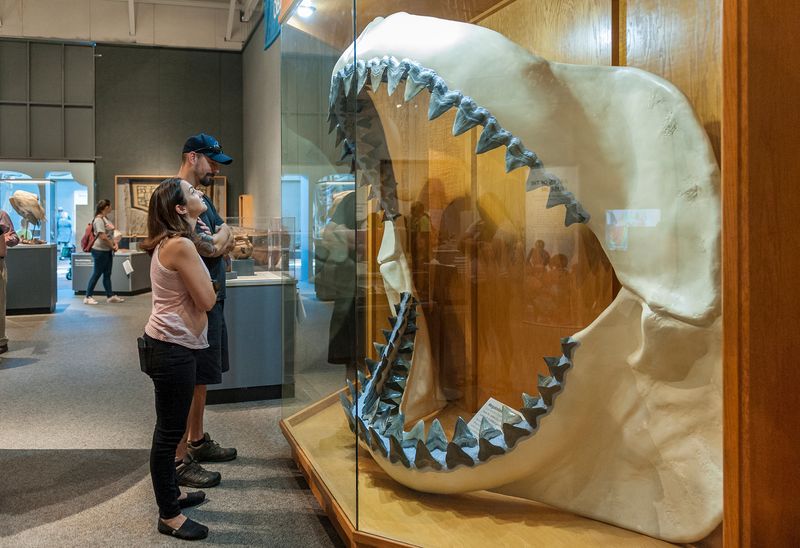
Their legacies endure in the halls of modern science. Megalodon’s immense jaws are a highlight in many museums, drawing crowds eager to glimpse its formidable teeth.
Mosasaurus skeletons, with their detailed vertebrae, offer a window into the aquatic past. These exhibits not only educate but inspire future generations of paleontologists.
The ongoing study of these creatures continues to reveal insights into the history of life on Earth, perpetuating their influence in both academic circles and popular culture.

